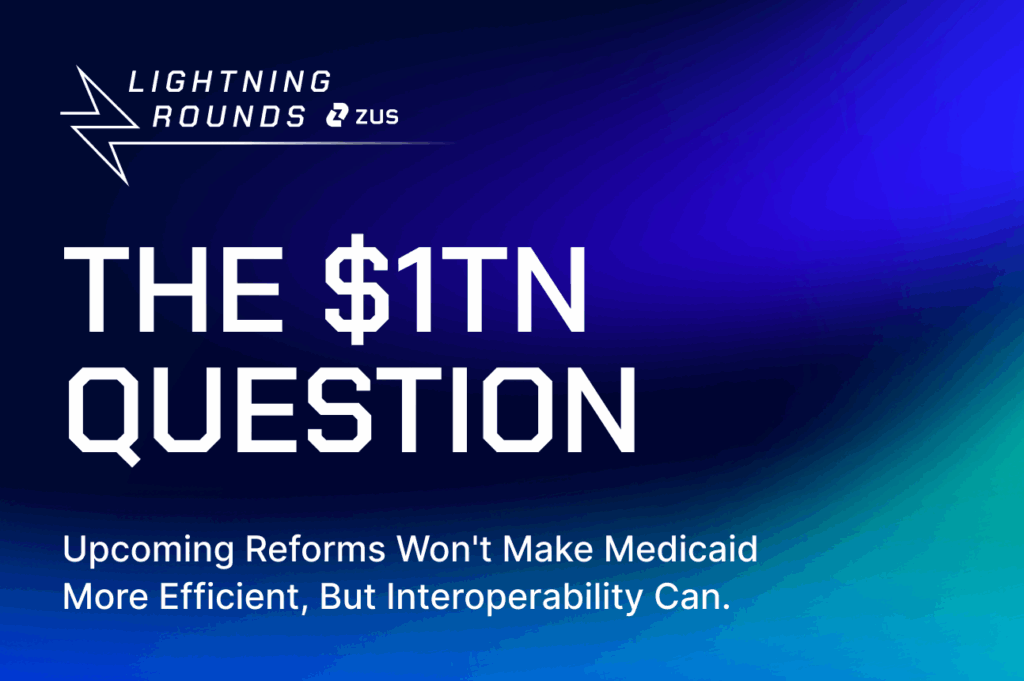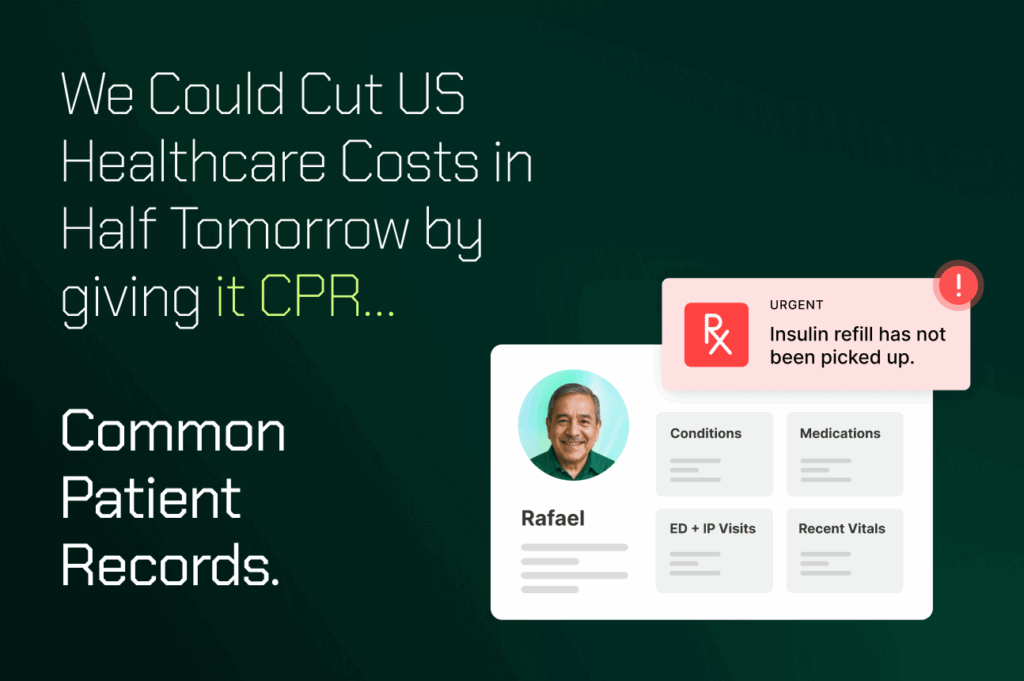Remember the story of the blind men and the elephant? Each man touches a different part of the elephant (tail, trunk, tusk) and thinks they’re dealing with a different creature.
It’s only when they compare notes that they understand what the elephant actually looks like.
Sound familiar? That’s U.S. healthcare in a nutshell. Every provider is making decisions based only on a piece of the patient’s history.
Thanks to siloed EHR data, providers can’t deliver the best care possible because they don’t have the full patient picture. Basically, they’re going in blind.
How Data Silos Create an Incomplete Patient Picture
When data isn’t freely shared among healthcare systems, providers miss information and patient pictures remain incomplete.
For example, a patient visits an out-of-network ER. The doctor is forced to play 20 Questions with the patient because their EHR doesn’t connect to the patient’s primary network. The patient forgets something important, and the doctor misses a key piece of the puzzle.
Data silos also lead to repetitive work. Let’s say a specialist prescribes a patient a new medication. A week later, the specialist calls the patient to check in on how the medication is working.
The patient’s PCP also calls to check in, not knowing that the specialist already did. The same task is performed twice — that’s time your clinicians don’t have to waste.
And let’s not forget the patient burden. For every new provider a patient visits, they’re filling out more of the same forms. In a siloed system, providers must rely on patient recall for important medical history. Our industry is full of technology — why are patients the integration layer?
We need to tear down the barriers, let data flow, and stop pretending that interoperability is a distant dream.
What Stands in Our Way of Breaking Down EHR Silos
Breaking down EHR silos is possible, but there are challenges. Two big ones: a data-sharing mandate that goes largely unenforced and regulation that stymies innovation in the healthcare space.
The Data Sharing Mandate Isn’t Enforced
In 2016, the 21st Century Cures Act prohibited healthcare providers from blocking access to electronic health information. This should have solved our problem with data silos, right?
Well, it didn’t. Not all healthcare systems have been following the law. In fact, our analysis shows that 40% of data isn’t being shared in designated networks by the providers who “own” it.
Most healthcare executives are not ignoring this law intentionally. They’re just swamped by all the work that goes into running hospitals. But that doesn’t mean we shouldn’t still hold them accountable.
More often than not, when you get these executives in a room and show them how data sharing makes life better for their people and their patients, they don’t fight it.
Mismatched Regulation Kills Innovation
Some laws swing a sledgehammer at data silos. Others pile more bricks on top. Too much regulation in the healthcare industry has killed data innovation.
Take the Anti-Kickback Statute. In theory, the law keeps doctors honest by banning financial kickbacks in the healthcare industry. This is a good thing — but it’s had an unintended consequence.
Because the law also makes it illegal for companies that connect data systems to receive payment for those connections, it’s hard to build a viable business model. That means there’s less incentive for data companies to innovate in the healthcare industry.
Inconsistent AI regulation has also made breaking down data silos challenging. When applied to structured data, AI can be extremely helpful. For example, our Generated Patient Summary saves providers hours of prep time every day.
But AI use in healthcare is regulated at the state level, and rules vary across the board. This patchwork approach means that multi-state organizations can’t use a single AI solution to improve the use of their data. They’re stuck in regulatory limbo instead of delivering better care.
Regulation should grease the rails for data flow, not impede its progress.
What a Healthcare System Without EHR Silos Would Look Like
Let’s revisit that out-of-network urgent care visit. This time, when the patient visits the urgent care clinic, their PCP gets a real-time alert about the visit and has immediate access to the urgent care doctor’s report.
They see that the patient was diagnosed with a UTI and was prescribed an antibiotic. They don’t have to wait days for the information to be faxed over. So, that same day, the PCP picks up the phone, checks in with the patient, and makes sure the treatment plan sticks.
That’s what breaking down silos really means: always-on, digital-first care that doesn’t leave patients hanging.
Freely flowing, usable data also enables helpful features for providers, like…
- Common Patient Record (CPR): One clean, compliant, and constantly updated view of the patient’s history. A CPR means that every member of the care team is singing from the same song book.
- Data Marts: Comprehensive, automatically refreshed data sets allow for easy but thorough population health analytics.
- Record Locator Service: An intelligently layered search process locates records by scanning patient addresses, past encounters, reciprocity requests, and more to provide as thorough a patient history as possible.
The result? A complete, real-time view of the patient that makes value-based care a reality. Providers get their time back, and patients get better outcomes.
A Complete Patient Picture Enables Value-Based Care
If the blind men were able to understand the entire elephant at once, they could have avoided their argument and skipped straight to deciding what to do with the elephant.
It’s the same with healthcare. Understanding the complete patient picture through unified data is only the first step.
But it’s an essential one that enables longitudinal care that both minimizes unnecessary costs and leads to positive outcomes.




